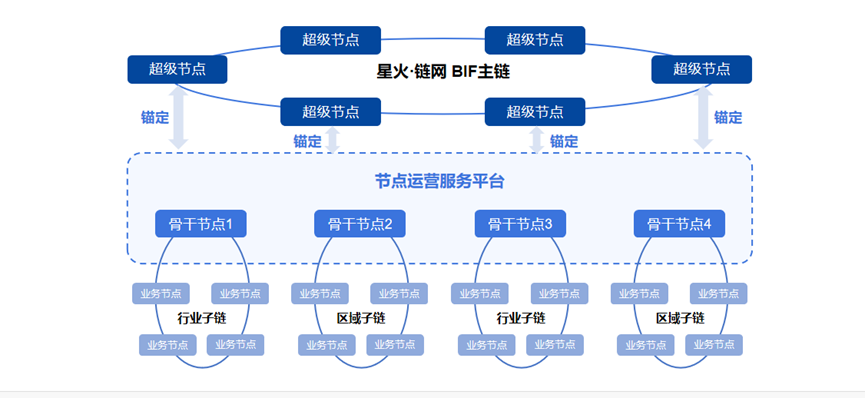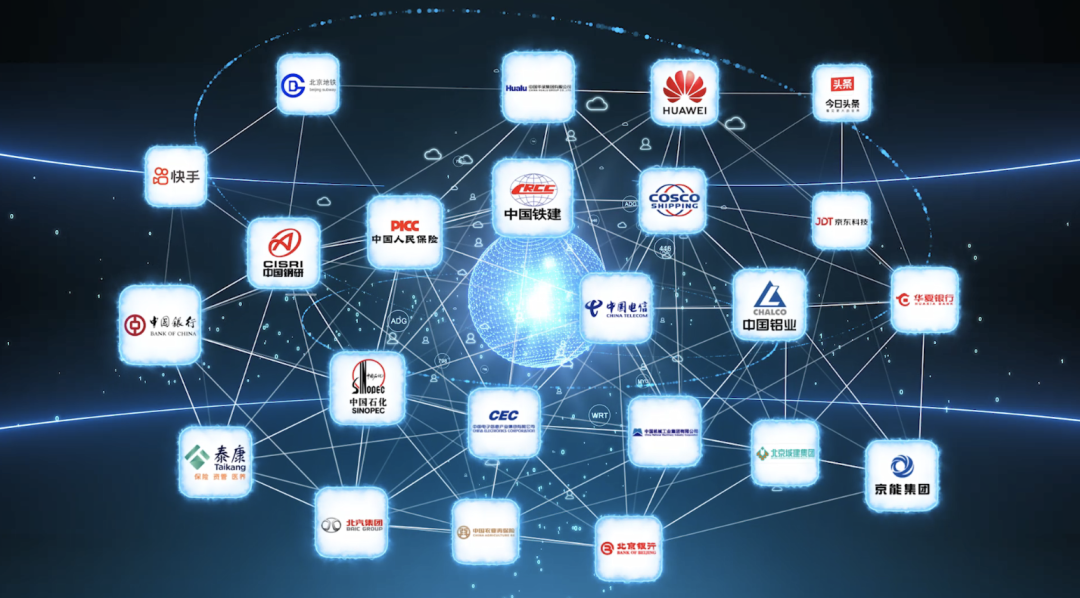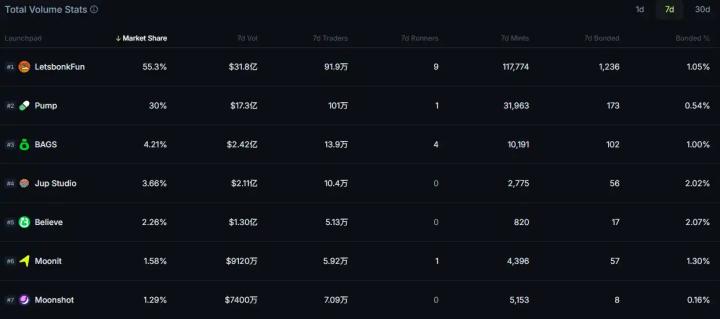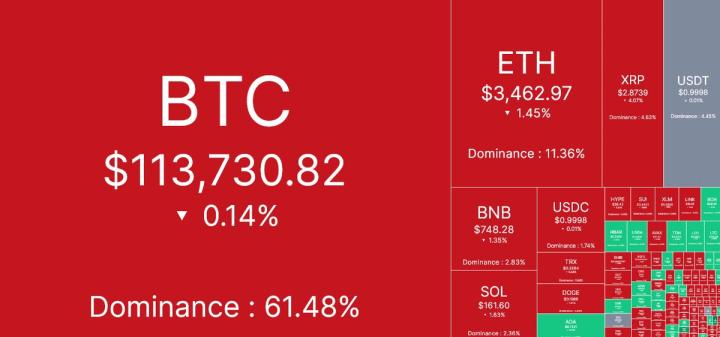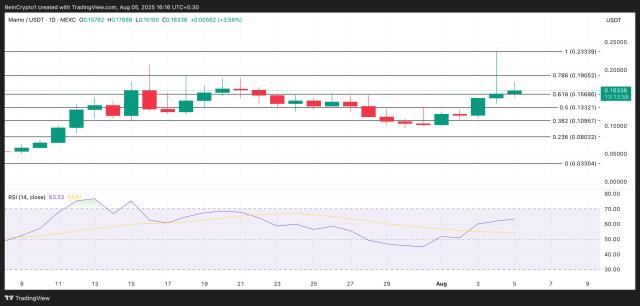Author: Frank, PANews
Original Title: Who Can Become the Technical Foundation for China's Stablecoin? Four "National-Level" Mainnets Compete
Stablecoins are becoming a strategic new track for major global economies, with the United States, European Union, Hong Kong, and others competing to introduce regulatory frameworks to seize the initiative. However, the issuance of any stablecoin cannot be separated from a critical underlying infrastructure - the mainnet.
Against this backdrop, the industry opinion that "our country lacks a globally influential mainnet and should be led by central state-owned enterprises" has sparked heated discussion. This view is not groundless but easily overlooks a fact: since blockchain was elevated to a national strategic height in 2016, a blockchain infrastructure network led by the "national team" and aimed at serving the real economy has taken shape.
From the global connector BSN, the industrial foundation "Xinghuo·Chain Network", to the technical cornerstone "Changan Chain", and the mainnet "Conflux" as a special case, they collectively constitute China's unique blockchain landscape. With the increasingly urgent demand for stablecoins, which of these networks is most likely to break through and become a trust foundation that carries China's stablecoin vision and faces the global market?
To accurately understand China's strategic intent, the term "mainnet" must be redefined in the Chinese context. Directly equating it with a permissionless chain would cause a serious conceptual deviation. In China, the "mainnet" promoted at the national level is essentially closer to a "public infrastructure" or "trust infrastructure" guided by the state, allowing multi-party participation, but ultimately controllable.
Among these, the currently influential ones in the industry include the Blockchain Service Network (BSN), Xinghuo·Chain Network, "Changan Chain", and the recently discussed mainnet Conflux. PANews will review and analyze these blockchain networks to see who is more likely to become the foundation for China's stablecoin.
Blockchain Service Network (BSN): Multi-Framework Adaptation, Focusing on No-Token Concept
In 2018, BSN was initiated by the National Information Center, China Mobile, China UnionPay, Beijing Red Date Technology, and other units, serving as a blockchain public infrastructure. Currently composed of BSN private network and BSN public network, where the BSN private network mainly serves enterprises, primarily the "BSN Distributed Cloud Management Platform", supporting deployment in various physical IDC machine rooms, public clouds, and private clouds to establish a blockchain-based distributed cloud system environment.
The BSN public network is more oriented towards the public chain and alliance chain concepts we are familiar with. In the BSN public network system, it is divided into the BSN-DDC basic network (an open alliance chain facing China) and the BSN Spartan network (a public distributed cloud service network composed of no-token public chains), facing overseas markets.
Currently, in the DDC network system, multiple open alliance chains such as Yan'an Chain, Wenchang Chain, Tai'an Chain, Wuhan Chain, and China Mobile Chain have been established. These networks use frameworks like Ethereum, EOS, FISCO BCOS, Corda, with main application scenarios including Non-Fungible Token (digital collections), distributed domain names, distributed identity (DID), and trusted data storage. The DDC network system is an alliance chain system without token design, with on-chain service fees requiring fiat currency recharge and facing the domestic market.
The consensus mechanism of the BSN Spartan network is more inclined towards public chains like Ethereum, but the difference remains that it is a no-token public chain. BSN Spartan currently consists of three sub-chains based on Ethereum, Cosmos, and PolygonEdge. As of August 4th, the daily transaction volumes of these three chains were 1,068, 844, and 938 respectively.
Overall, BSN's core innovation lies in multi-framework adaptation, with a unified adaptation and management capability for dozens of mainstream blockchain underlying frameworks globally (including alliance chains and public chains). Through a standardized adaptation mechanism, developers can "plug and play" to choose different underlying chains without worrying about complex deployment and operation details, like a universal "operating system" in the blockchain world. However, for the increasingly strong stablecoin demand, BSN's current lack of Token mechanism may become a constraint. BSN Development Alliance Standing Director and Red Date Technology CEO He Yifan has previously expressed multiple times his extreme aversion to virtual currencies, believing they are a massive Ponzi scheme.
"Xinghuo·Chain Network": Supported by the Ministry of Industry and Information Technology, Focusing on Industrial Fields
According to official introduction, "Xinghuo·Chain Network" is a national-level blockchain new integrated infrastructure system led by the China Academy of Information and Communications Technology under the leadership and special support of the Ministry of Industry and Information Technology, jointly built with multiple large enterprises and institutions such as Beijing University of Aeronautics and Astronautics, Beijing University of Posts and Telecommunications, and China Unicom.
From an architectural perspective, "Xinghuo·Chain Network" is divided into two layers: the first layer is the mainchain composed of super nodes, used for managing identifiers, public data, or other legal assets and regulatory resources that the state may provide in the future. The second layer is sub-chains linked by backbone nodes, connecting various industry or regional applications.
It is worth noting that "Xinghuo·Chain Network" is a permissioned public blockchain network, and from the current information, it also lacks token design. Similarly, "Xinghuo·Chain Network" is divided into the domestic network's mainnet and the international version ASTRON network. Currently, the established super nodes of "Xinghuo·Chain Network" are in Xiamen and Liuzhou; backbone nodes are in Jiaozhou, Hengqin, Suzhou, etc.; international nodes are in Malaysia, Macau, and other locations. The node access threshold for "Xinghuo·Chain Network" is relatively high, requiring local government promotion.
"Xinghuo·Chain Network" highly focuses on industrial field applications, including: full lifecycle traceability of high-end manufacturing products, collaborative management of complex supply chains, digital identity authentication and predictive maintenance of industrial equipment, and trusted sharing and trading of industrial data.
Changan Chain (ChainMaker): Multiple Policy Plans, State-Owned Enterprises and Internet Giants Participate
"Changan Chain" is led by the Changan Chain Ecosystem Alliance, initiated by the Beijing Microchip Blockchain and Edge Computing Research Institute (abbreviated as "Microchip Institute") under the guidance and support of the Beijing Municipal Government.
The Changan Chain Ecosystem Alliance covers key state-owned enterprises such as State Grid, China Construction Bank, Industrial and Commercial Bank of China, China Unicom, COFCO Group, and internet giants like Tencent and Baidu. Currently, the alliance has over 50 members.
In November 2021, "Changan Chain" was written into the "Beijing 14th Five-Year International Science and Technology Innovation Construction Plan". In January 2022, it was included in the Beijing Municipal Government Work Report. In the "Beijing Blockchain Innovation Application Development Action Plan (2025-2027)" in 2025, "Changan Chain" was mentioned again.
Besides its profound background, "Changan Chain" also has obvious technical advantages. The official claims its transaction throughput (TPS) can reach 10,000 levels, capable of meeting high concurrency needs in large-scale financial and governmental scenarios.
Conflux (Tree Graph Chain): Developed by Tsinghua "Yao Class" Team, the Only Mainland Public Chain Issuing Tokens
Unlike the above blockchain networks with obvious alliance chain characteristics, Conflux is currently the only public chain in Mainland China that complies with regulatory requirements. Conflux was established in 2018 by Yao Class graduate and MIT Ph.D. Long Fan, with Academician Yao Qizhi personally serving as the chief scientist and participating in the core algorithm's theoretical design. In January 2020, the Conflux team officially established the Shanghai Tree Graph Blockchain Research Institute. In October of the same year, the Conflux blockchain mainnet was officially launched.
As a complete public chain, Conflux also has a governance Token CFX. Although Mainland China has strict regulatory policies on cryptocurrencies, Conflux successfully issued and operates its Token CFX, making it a unique "special case".
CFX, as a global crypto asset, has been listed and traded on multiple mainstream cryptocurrency exchanges such as Binance, OKX, and gate.io. Its market price and market value are influenced by various factors including technological progress, ecosystem development, and macroeconomic market environment. For example, recent positive news about Conflux 3.0 upgrade and plans to support offshore RMB stablecoin has previously caused its Token price to surge significantly in the short term.
Moreover, the endorsement of the Tree Graph Chain is also noteworthy. The Tree Graph Chain has been reported multiple times by mainstream official media such as the People's Daily and has deeply collaborated with central enterprises like China Telecom and China Mobile. Additionally, the Tree Graph Chain is collaborating with the financial technology company AnchorX to explore issuing a stablecoin anchored to offshore RMB (AxCNH) to support cross-border payment needs for countries along the "Belt and Road" initiative.
Who is More Likely to Become the Technical Foundation for Stablecoins?
Besides the aforementioned blockchain networks with strong endorsements, domestically there are also several alliance chains such as the State Grid Chain (State Grid), Unicom Chain (China Unicom), China Mobile Chain (China Mobile), ICBC Chain (Industrial and Commercial Bank of China), Ant Chain (Ant Group), Zhixin Chain (Tencent), and Zhongyong Chain Network. Most of these alliance chains are initiated by central state-owned enterprises or tech giants, each with unique advantages and influence in their respective domains.
But returning to the original topic, does China have a public chain with international influence? The answer so far seems to be vacant. The primary reason is that most Chinese blockchain networks are alliance chains, with significant differences in consensus mechanisms and economic models compared to overseas public chains like Ethereum and Solana.
Among the existing public chain infrastructures, the "Tree Graph Chain" is most likely to grow into an internationally recognized domestic public chain. From a technical perspective, the "Tree Graph Chain" possesses internationally recognized public chain characteristics and has innovative and performance advantages. Its official background and clear offshore RMB stablecoin exploration plan have positioned it at the forefront of the stablecoin track.
Among other blockchain networks, the "Chang'an Chain" also has the potential to become the underlying architecture for stablecoin issuance. In 2021, its research institution, Microchip Institute, signed a strategic cooperation agreement with the Central Bank Digital Research Institute to jointly promote enterprise-level applications of digital RMB based on the "Chang'an Chain". Moreover, the "Chang'an Chain" has technical characteristics that can support Token design, meeting the technical requirements for stablecoin issuance. Its powerful state-owned enterprise ecosystem provides a natural advantage in promoting stablecoin applications between institutions or in specific scenarios.
Of course, in addition to this, as listed companies in Europe and the United States begin to treat cryptocurrencies as treasury assets and participate in public chain governance, China's public chain path might have a third option: participating in the governance of mainstream international public chains. After all, in a decentralized world, national boundaries are often just a difference in computing power percentage.
Twitter:https://twitter.com/BitpushNewsCN
PANews TG Community:https://t.me/BitPushCommunity
PANews TG Subscription: https://t.me/bitpush



